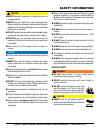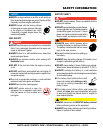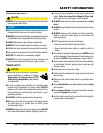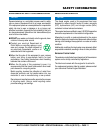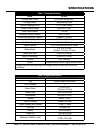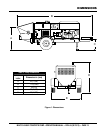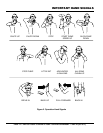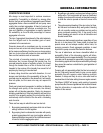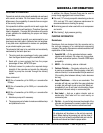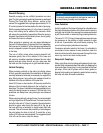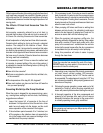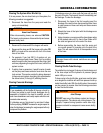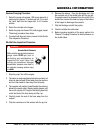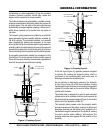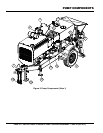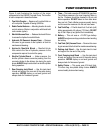
Concrete is made by mixing locally available rock and sand
with cement and water. For this reason there are great
differences in the pumpability of concrete from one region
of the country to another.
It is impossible to define a specific mix for each region that
the concrete pump be will working in. Therefore, the mixes
listed in Appendix - Concrete Mix Information will provide
a basic guideline for establishing the proper mix design
for your area.
Use this information to specify your requirements to your
local ready-mix batch plant, contractor and civil engineer.
It may take minor adjustments to make a mix pumpable,
so you should explain your needs.
The elements that have to be controlled and consistently
maintained by the batch plant are:
1. The sizing and mix percentage of rocks, gap graded
from the largest down through the smallest sizes.
2. Sand with a sieve analysis that has the proper
percentage of fines, ASTM C33 spec.
3. Sufficient cement to produce the required design
strength of the concrete and provide the lubricating
binder to pump the concrete through the delivery
system.
Use a minimum of:
500 lbs. of cement/cu yd for 2500 p.s.i. concrete after
28 days.
530 lbs. of cement/cu yd for 3000 p.s.i. concrete after
28 days.
600 lbs. of cement/cu yd for 4000 p.s.i. concrete after
28 days.
4. Admixture pump-aid if necessary.
5. The proper amount of water to make a workable slump
and plasticize the mix.
GENERAL INFORMATION
In addition, this Mayco Concrete Pump can be used to
pump a large aggregate hard rock as follows:
Pea rock (1/2" minus) pump with mixes being as low as
30% rock and 70% sand. (reference maintenance for
recommendations on cleaning the pump.)
Shortening pea rock when used with an air compressor
and nozzle.
“Mud Jacking”, high pressure grouting.
Remixtures
Remixtures that are designed into the concrete mix by
the redi-mix company or an architectural engineering
company. This section lists common admixtures and a brief
explanation of their functions:
1. — Or the equivalent acts as a water
retarder and a lubricant. On a lean mix, long pushes,
stiff mixes, and vertical pushes, Pozzolith 300R helps
pumpability.
2. — Air entraining, acts as a lubricant.
3. Calcium Chloride — Commonly referred to as C.C.,
is used as an accelerator. When pumping a load with
calcium chloride, it is recommended that you wash out
if the waiting time between delivery trucks becomes
too long.
4. Super Plasticizers — Acts as an accelerator. The
concrete will look very wet after the super plasticizer
is added, but will begin to set up very fast. Wash out
immediately if you do not have a truck waiting. Super
plasticizers are used mainly on commercial jobs.
5. Red Label — Acts as a water retarder and an
accelerator. Red label will be used mainly on
commercial jobs.
6. Fly Ash — Is used to help increase the strength of the
concrete and decrease the cement content per yard.
This is one of the most common admixtures used.
NOTICE
All admixtures will be shown on the redi-mix concrete
ticket. Before starting the pumping job, ask the driver of
the redi-mix truck to see the concrete ticket and note the
admixtures that exist and take the proper action.



